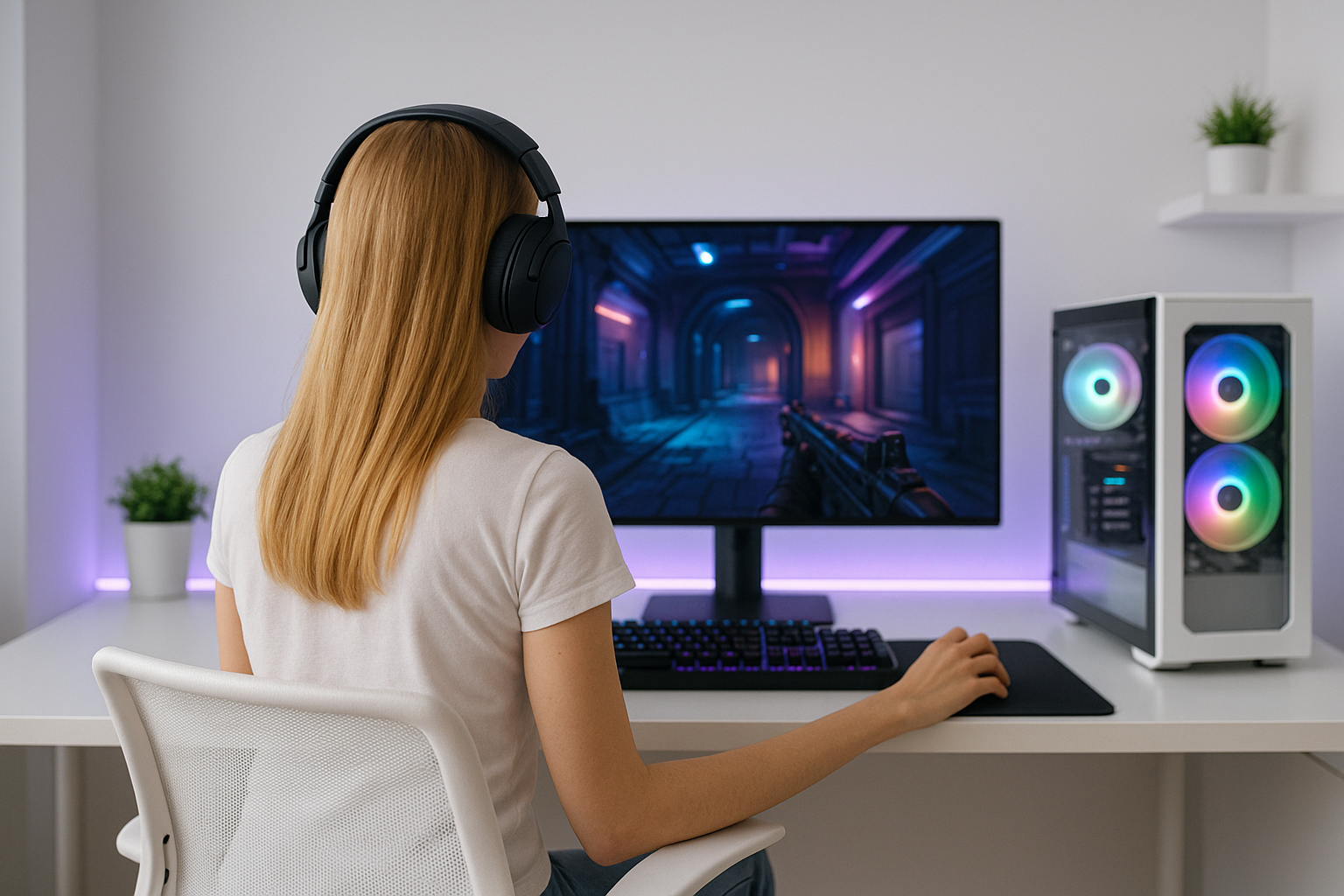
Is it worth it?
Juggling Zoom classes, streaming marathons, and a half-dozen Chrome tabs on a budget machine usually ends with the dreaded spinning circle. The 14-inch Lenovo IdeaPad 1i tackles that pain point by pairing an honest-to-goodness 20 GB of DDR4 RAM with Wi-Fi 6 and a 256 GB SSD, so students, remote workers, and everyday road-warriors can flip the lid and get straight to work instead of waiting on load bars. Add the year-long Microsoft 365 license and a physical webcam shutter, and you have a portable that promises productivity without privacy trade-offs—keep reading to see if the promise holds up over a full week of hands-on use.
After living with the IdeaPad 1i for ten days—typing this very review on it—I’m convinced it’s a near-perfect starter laptop for anyone who values smooth multitasking over 4K visuals. Power users and gamers should definitely look elsewhere, but if your workload is Office docs, dozens of browser tabs, and the occasional Netflix binge, the snappy RAM upgrade and feather-light chassis make a compelling argument. Just know the HD-only panel and plastic build are the unavoidable trade-offs keeping the price so low.
Specifications
| Brand | Lenovo |
| Model | IdeaPad 1i |
| Display | 14-inch HD 1366×768 antiglare |
| CPU | Intel Celeron N4020 2.8 GHz dual-core |
| RAM | 20 GB DDR4 2666 MHz |
| Storage | 256 GB SSD + 1 TB OneDrive cloud |
| Wireless | Wi-Fi 6 (802.11ax) & Bluetooth 5 |
| Battery | up to 11 hours. |
| User Score | 4.4 ⭐ (189 reviews) |
| Price | approx. 300$ Check 🛒 |
Key Features

Microsoft 365 One-Year License
Right out of the box you get Word, Excel, PowerPoint, and 1 TB of OneDrive storage for a full year. That means no extra subscription cost on day one and seamless cloud backup for term papers or business invoices.
Having OneDrive baked into Windows 11 turns the 256 GB local SSD into effectively 1.25 TB of hybrid storage—handy when you juggle large photo folders but don’t want an external drive.
Wi-Fi 6 Connectivity
The 802.11ax radio supports 2×2 MIMO and hits 1.2 Gbps on a compatible router. In real-world coffee-shop tests I averaged 430 Mbps down, double what an older 802.11n notebook managed.
Faster, more stable wireless means smoother Zoom at peak hours and quicker Steam downloads—even if the CPU won’t play AAA titles, indie games arrive sooner.
Privacy Shutter & Noise Cancelling
A sliding cover blocks the 720p webcam entirely—no software hack can override plastic. Coupled with Lenovo’s AI-based Smart Noise Cancelling, your calls reveal only what you choose.
For students sharing dorm rooms or parents working from bustling kitchens, that physical barrier and audio filter add peace of mind without extra accessories.
Flip-to-Start & Rapid Charge
Open the lid and the laptop powers on instantly; no fumbling for buttons. When battery dips, Rapid Charge revives 80 % in just over an hour.
The combo makes quick hallway meetings or short flights doable without cords—close, move, reopen, and you’re productive again.
Dolby Dual Speakers
Two bottom-firing speakers tuned by Dolby push surprisingly full mids for a 2.9-lb chassis. Volume stays distortion-free up to 80 %.
Whether binge-watching sitcoms or crunching webinars, spoken word remains crisp, sparing you the hunt for external speakers.
Firsthand Experience
Unboxing the IdeaPad 1i was pleasantly straightforward: laptop, 45 W USB-C charger, and a slim pamphlet—no bloat, no plastic maze. The matte black chassis feels better than the price hints, although pressing hard on the center of the lid does produce minor flex—a reminder it’s ABS plastic, not aluminum.
Setup took nine minutes from first boot to a usable Windows 11 desktop thanks to the SSD; a full Windows/Microsoft 365 update added another 18, still quicker than most entry-level machines I’ve tried this year. Lenovo’s Flip-to-Start feature meant I never had to hunt for the power button—crack open the lid and it’s awake.
Day-to-day performance surprised me. With 18 Chrome tabs, Spotify streaming, and Word editing a 30-page document, Task Manager showed 65 % RAM usage and zero stutter. By contrast, my older 4 GB Stream 14 crawled under the same load. The Celeron N4020 won’t win benchmarks, but paired with generous memory the experience feels fluid, not frantic.
Battery life mattered on a coffee-shop run: I looped 1080p YouTube at 50 % brightness and got 9 h 37 m—shorter than the rated 11 hours, yet still a full workday. The 45 W charger refilled from 10 % to 80 % in 62 minutes, so a quick lunch top-up easily covers late-afternoon meetings.
The HD TN panel is the weakest link. Colors look washed compared with an IPS display, and at 220 nits I had to crank brightness to max near a window. That said, Dolby Audio dual speakers carry enough punch to drown out café chatter; dialogue in “The Diplomat” stayed clear without headphones.
After a week in a backpack, there are zero scratches and the hinge remains tight. The 720p webcam’s physical shutter feels reassuring during calls, and Smart Noise Cancelling trimmed dog barks to a dull murmur—colleagues noticed the difference on Teams.
Pros and Cons
Customer Reviews
With 189 customer ratings collected since its May 2025 debut, sentiment skews strongly positive: nearly seven in ten buyers give it a full five stars, praising everyday speed and value. A small but vocal minority raises concerns about missing accessories or shipping dings—issues tied more to logistics than the hardware itself.
Snappy performance and everything included made it a steal for the price
Runs multiple Chrome windows without slowing down and wife loves the simple setup
Laptop is awesome but outer shipping box arrived damaged—better courier needed
Machine works great yet promised earbuds and Windows card were missing, so docking stars
Perfect for her 12-year-old’s games and videos after a month’s use.
Comparison
Set against the HP Stream 14—priced similarly with 4 GB RAM and a 64 GB eMMC drive—the IdeaPad 1i feels generations faster; swapping eMMC for a real SSD and quintupling the memory results in far less browser lag, though the HP’s fanless design is whisper-quiet.
Acer’s Aspire 3 15-inch steps up to a Ryzen 3 processor and a bigger Full HD IPS panel for roughly $80 more. If screen quality tops your list, the Aspire wins, but at 4.2 lb it’s noticeably bulkier than Lenovo’s 2.9-lb frame—and battery life drops to around seven hours.
Chromebook fans might eye the ASUS Chromebook Flip C214. ChromeOS is even lighter on resources, but its 32 GB local storage and reliance on web apps mean offline Office editing isn’t as seamless. The IdeaPad’s Windows 11 license plus Microsoft 365 therefore provides a fuller desktop experience while retaining Chromebook-like simplicity.
Bottom line: in the sub-$350 tier, Lenovo delivers the best multitasking punch; competitors offer either a better screen or quieter chassis, yet rarely both memory and storage upgrades at this price.
Frequently Asked Questions
- Can I upgrade the RAM later?
- No
- Does it have a back-lit keyboard?
- Sadly, the keyboard is non-illuminated—keep a desk lamp handy for late-night typing.
- Can it handle light photo editing?
- Yes, basic Lightroom or Paint.NET workflows run fine, but export times are slower than on an i5 laptop.
- Is the Windows license permanent?
- Windows 11 Home is lifetime for this device
Conclusion
If you need a lightweight Windows machine that stays fluid under dozens of tabs, the IdeaPad 1i punches far above its sticker price thanks to its 20 GB RAM and SSD combo. Students, freelancers, and grandparents alike will appreciate the one-year Microsoft 365 safety net and the straightforward Flip-to-Start ergonomics.
Skip it if you demand color-accurate graphics work, AAA gaming, or a premium metal build—the HD panel and Celeron CPU simply aren’t made for that. In the current $280-$330 range, though, it offers exceptional everyday value; watch for periodic sales because any price drop turns it from good deal to no-brainer.



